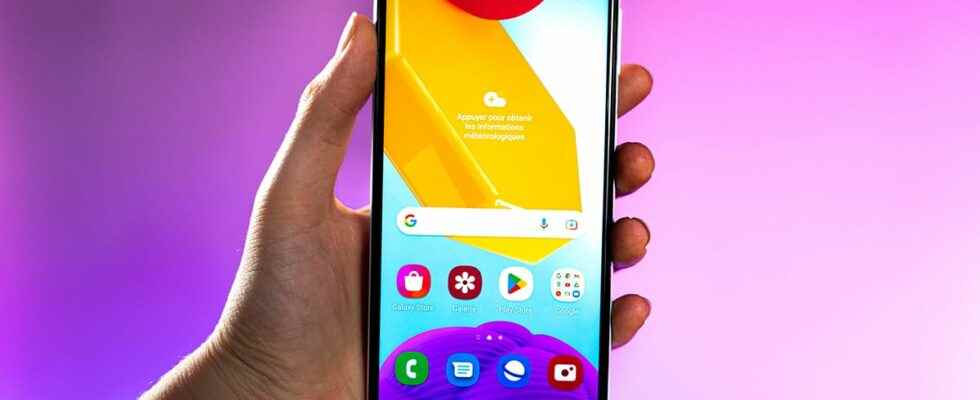Faced with the hordes of entry-level smartphones offered by Chinese manufacturers, Samsung does not remain without reacting. With the Samsung Galaxy M13 4G, the Korean is targeting the market for mobiles under 200 euros, while promising quality services. We therefore checked whether it is still able to hold its own in this market segment.
Samsung Galaxy M13 4G
This test was carried out using a model lent by CDiscount.
Samsung Galaxy M13 4GDesign
Samsung offers us here a product with a very smooth design, whose 6.6-inch screen (with a central teardrop punch) is surrounded by fairly thick borders. In addition, the chin is also noticeable, which explains why the screen occupies only 82.5% of the front surface. However, in this price segment we are not struck by these points. We are much more so by the ability of the front surface to capture fingerprints.
The completely plastic back has a surface with an aesthetic ripple relief. Which also brings a warmer touch than a smooth shell, but does not make it less slippery in case of heavy sweating. This model is available in light blue (tested here) and dark green. The optical block is quite thin and is aesthetically similar to what a Galaxy S22 offers, minus the finishes.

The slices are more rounded and offer a totally smooth feel. At the button level, those dedicated to volume management and the power-on button are located on the right edge. We would also have appreciated that they were placed a little lower to avoid having to stretch the thumb too much. With dimensions of 165.4 x 76.9 x 8.4 cm and 192 g, we have an upper-middle-range product, but only users with small hands will really struggle.
The lower edge displays a jack port, a USB-C port (in USB 2.0 version and not 3.0) and six perforations which hide a speaker. On the left edge, we have the cache giving access to a slot for two Nano Sim cards and a microSD card.
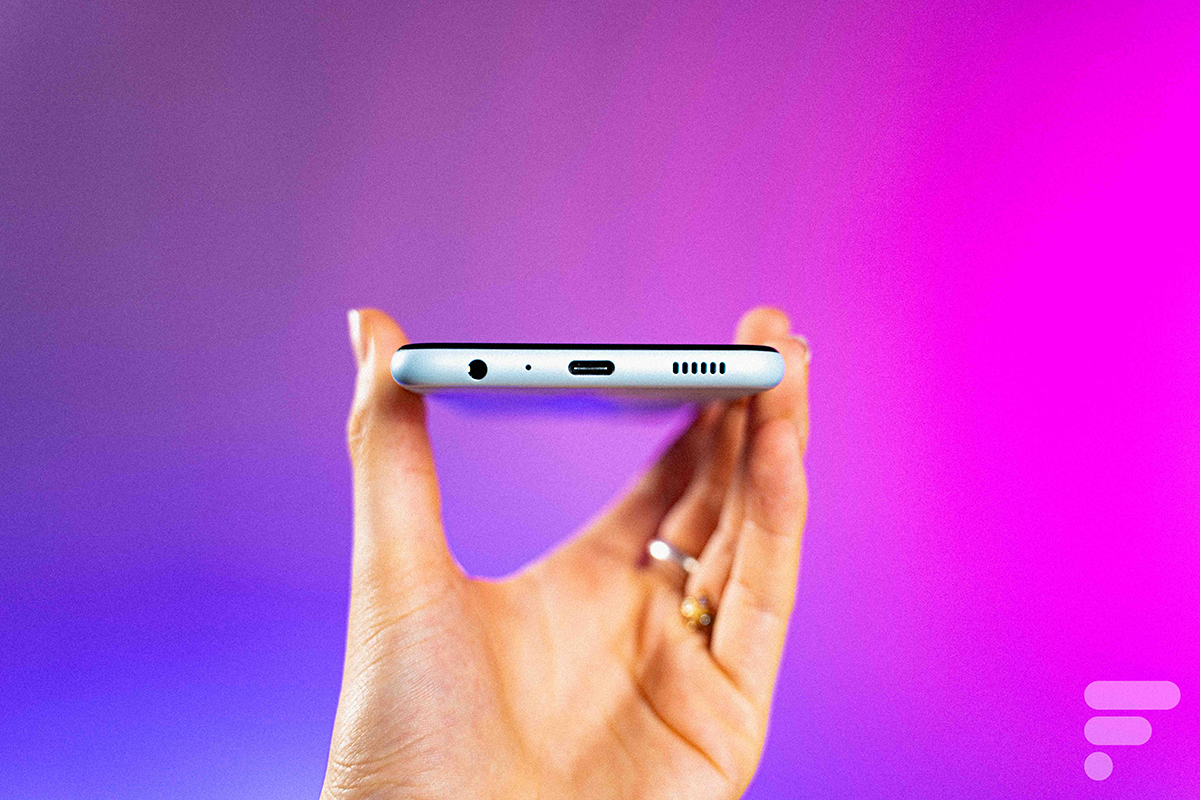
Samsung signs here a rather pretty entry-level smartphone. If plastic is king, the M13 4G nevertheless benefits from good manufacturing quality and does not display any real design flaws.
Samsung Galaxy M13 4GScreen
The Samsung M13 4G has a 6.6-inch PLS LCD panel (Samsung-specific IPS technology), 1080 x 2408 pixels, 20:9 ratio. With a pixel density of 400 dpi, it offers a display of great finesse.
We measured this screen using our probe and CalMAN Ultimate software from Portrait Displays. It displays a measured color temperature of 7577 K against 6500 K for the reference value, so we have a cold display, with a slight, but noticeable drift towards the blues.
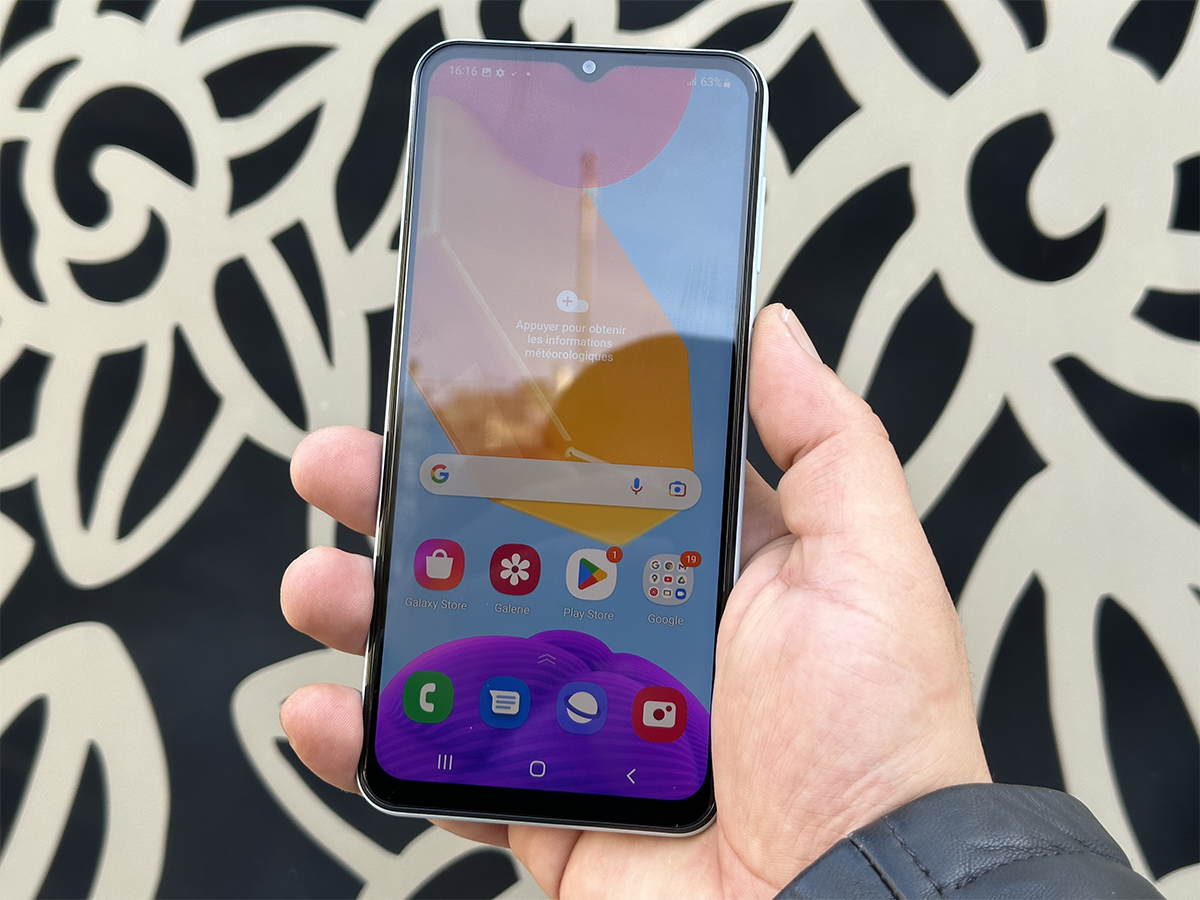
With a contrast ratio of 1430:1 and a brightness of only 430 cd/m², we clearly lack pep’s. While LCD is often brighter than OLED or AMOLED, this M13 4G falls behind. As a result, in direct sunlight the screen loses a lot of readability.
Samsung Galaxy M13 4GSoftware
This Samsung uses Android 12 and its One UI 4 overlay, but in its lighter version. The latter incorporates a little less functionality to remain fluid with an entry-level processor. We find a known interface, which offers many customization options and the Galaxy Store theme store still offers as much variety.

Source: Yazid Amer – Frandroid

Source: Yazid Amer – Frandroid
Samsung integrates its Knox security tools, finally you have access to the “layers” that protect your data, but you do not have full access to all the features. A game mode is present, it mainly allows you not to be disturbed by notifications during your game sessions.

Source: Yazid Amer – Frandroid

Source: Yazid Amer – Frandroid

Source: Yazid Amer – Frandroid
Regarding video content from sVoD platforms, the DRM Wideline L1 is well integrated and therefore allows viewing in HD. Samsung promises two years of major updates and three years of security patches.
Samsung Galaxy M13 4GPhoto
The Samsung M13 4G has three photo sensors:
- A 50-megapixel f/1.8 wide-angle main sensor;
- a 5-megapixel f/2.2 ultra-wide-angle sensor;
- a last of 2 megapixels in f / 2.4 for the depth of field.
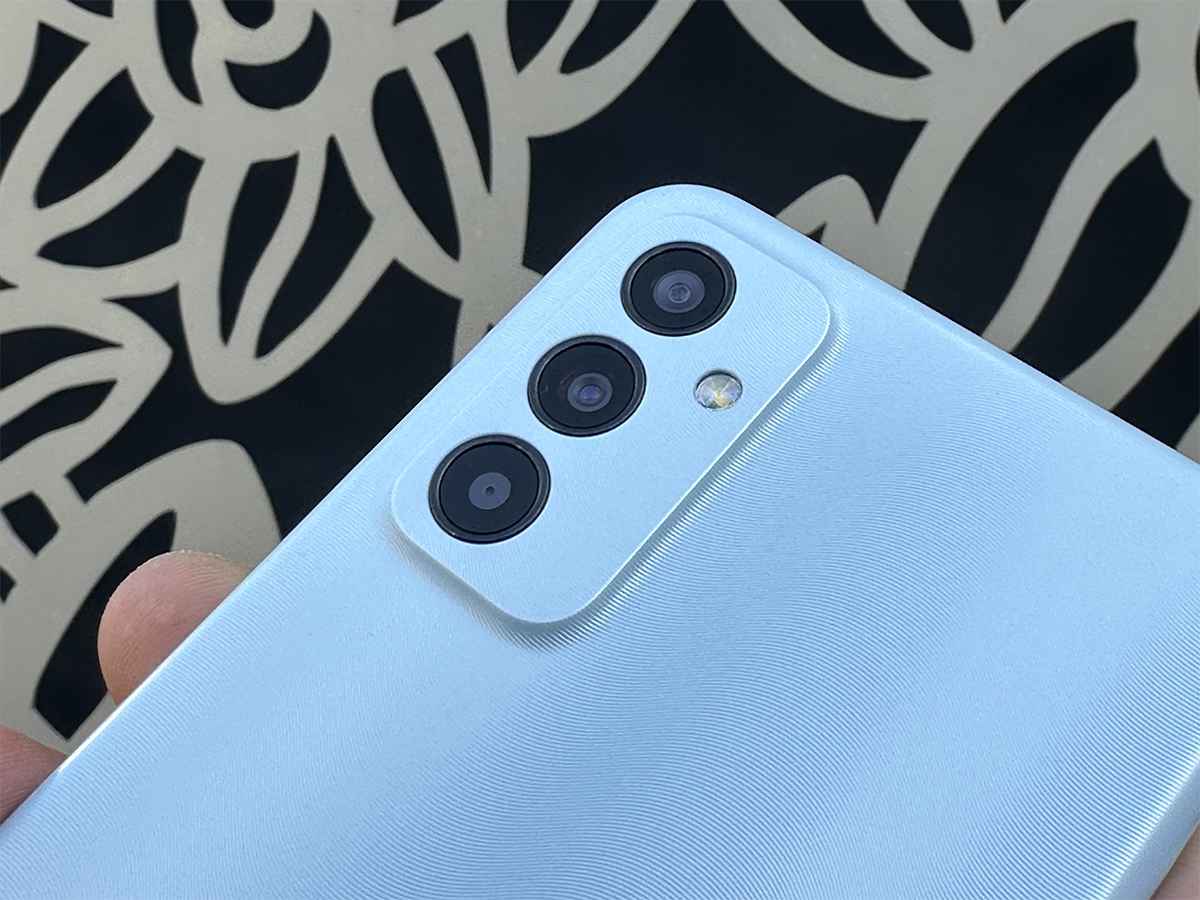
In broad daylight, we get acceptable shots, but nothing more. Indeed, they clearly lack sharpness and the colorimetry is a bit bland. There is a real lack of precision and detail. The statue in the photo below shows only a few reliefs and the gradients lack finesse. The foliage of the trees undergoes an overly aggressive digital treatment, which erases the details and completely blurs the rendering.

The ultra wide-angle mode manages to offer a correct rendering in the center of the photo. Beyond this area, there is excessive distortion of the image, which drops the overall level of detail. In addition, the colorimetry is a little warmer than in wide-angle mode, which is closer to reality.


The 2x digital zoom is pleasantly pleasing… but only at first glance. Thus, we have a clean image, with the main elements that stand out well. However, once again the digital processing is too aggressive and eliminates the bulk of the details that would have given the shot a sharp edge.


Without night mode there is no hope of obtaining an honorable photo. When activated, the result is better, but clearly lacks detail. Digital noise is king, colorimetry coarse and it is difficult to obtain a really sharp image.

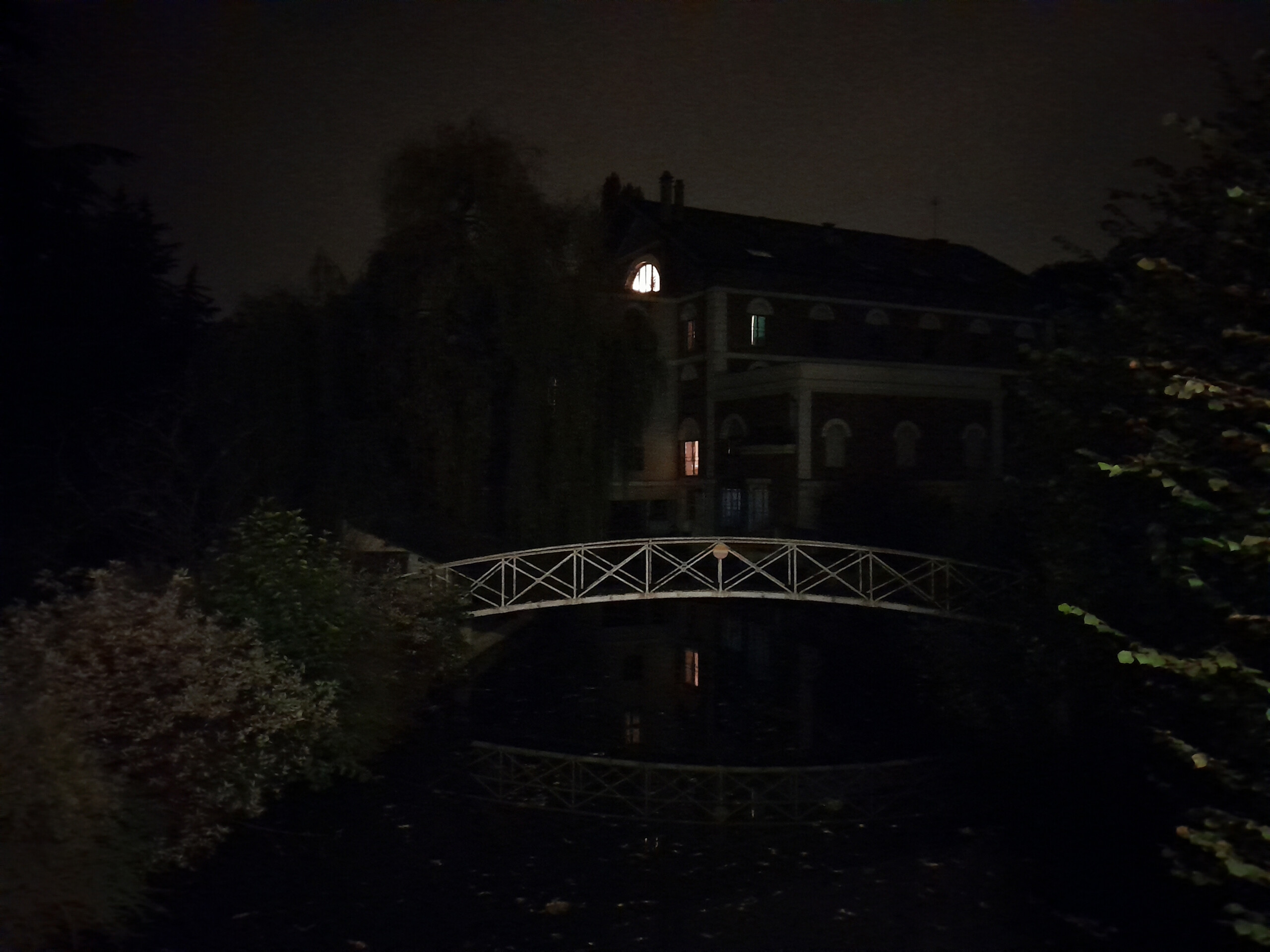
Even when there is a noticeable light source, at night the photos lack sharpness, which the slightest micro-movement will only amplify.
Inaccurate selfies
the portrait mode of the Samsung M13 performs an honorable clipping, but you will regularly have imprecise areas. Here it is at the patch on the left sleeve, the pleats on the right sleeve and the cap. If you have abundant, rebellious hair, then you risk bringing the M13’s portrait mode to its knees. The colorimetry is a little pale, which is felt on the brighter red of the jacket in reality and a slightly lighter complexion than it should be here.

If you use the front camera of 8 MP (f/2.2), you will quickly discover that the clipping is not very precise. As you can see below, at the ears, the cap and the fluffy parts of the jacket. The colorimetry is a little more accurate than that offered by the dorsal portrait mode, the same for the complexion even if it remains imperfect.

The photo part of this M13 is ultimately disappointing, because even if we cannot ask for a miracle at this price level. Direct competitors like the Xiaomi Redmi Note 11, or the Realme 8, offer more quality shots, even at night.
Samsung Galaxy M13 4GPerformance
We are looking at an entry-level model and yet we are a little disappointed with the performance of its Exynos 850. Indeed, this 4G SOC, which comes with 4 GB of RAM, an Elios P19 GPU and of 64 GB of storage space (expandable), does not really shine under the onslaught of our various performance tests. Thus, a Redmi Note 11 or a Realme 8, which are marketed at the same price as the Samsung M13, are doing much better.
| Model | Samsung Galaxy M13 4G | Xiaomi Redmi Note 11 | Realme 8 |
|---|---|---|---|
| AnTuTu 9 | 132095 | 249999 | 355877 |
| AnTuTu CPU | 35183 | 83900 | 97435 |
| AnTuTu GPU | 25263 | 38305 | 100164 |
| AnTuTu MEM | 35821 | 67417 | 61104 |
| AnTuTu UX | 35828 | 60377 | 97174 |
| PC Mark 2.0 | N/C | N/C | 9655 |
| PC Mark 3.0 | 4927 | 7627 | N/C |
| 3DMark Slingshot Extreme | 882 | 1345 | 2611 |
| 3DMark Slingshot Extreme Graphics | 765 | 1175 | 2612 |
| 3DMark Slingshot Extreme Physics | 1890 | 2730 | 2607 |
| 3DMark Wild Life | 512 | 440 | 1469 |
| 3DMark Wild Life average framerate | 3 FPS | 2.70 FPS | 8.8 FPS |
| 3DMark Wild Life Extreme | 140 | N/C | N/C |
| 3DMark Wild Life Extreme average framerate | 1 FPS | N/C | N/C |
| GFXBench Aztec Vulkan/Metal high (onscreen / offscreen) | 4 / 2 FPS | 4.9 / 3.2 FPS | 11 |
| GFXBench Car Chase (onscreen/offscreen) | 5 / 6 FPS | 7.2/8.2FPS | 18 / 20FPS |
| GFXBench Manhattan 3.0 (onscreen/offscreen) | 8 / 9 FPS | 20 / 23FPS | 29 / 33 FPS |
| Sequential Read/Write | 308 / 241 MB/s | 923 / 509 MB/s | 527 / 187 MB/s |
| Random read/write | 25521 / 16429 IOPS | N/C | 38434 / 44054 IOPS |
See more benchmarks
So here we have a Samsung that regularly suffers from slight slowdowns. Let’s not forget the jerks that are also there, especially when your movements are too fast for the mobile. Which will happen to you regularly. We even have a display with a significant latency, like when we search for an app in the Play Store, but also on the phone. Admittedly, the M13 is less than 200 euros, but the competition is able to offer services without slowdowns or almost for the same price.

The Helios P19 GPU is not enough to compensate for the lack of punch of the Samsung SoC. Fortnite refused to launch, so we fell back on Genshin Impact… Ditto… So we launched Call of Duty Mobile and used the developer tools to determine the framerate. On average we are between 24 and 27 fps with peaks at 30 fps. However, we are limited to the lowest quality mode anyway. The gaming experience is therefore much too degraded.
Samsung Galaxy M13 4GAutonomy
With a 5,000 mAh battery, the M13 is well equipped and we were hoping for nice endurance. After launching our ViSer software, which simulates active smartphone use (surfing the web, texting, calling, video, listening to music, downloads, etc.), we got a score of 2:02 p.m. before moving from 100% to 10% battery. We are here in a good upper average, without being exceptional either. Thus, the Xiaomi Redmi Note 10S, with a battery of the same capacity, lasts more than 15:30.
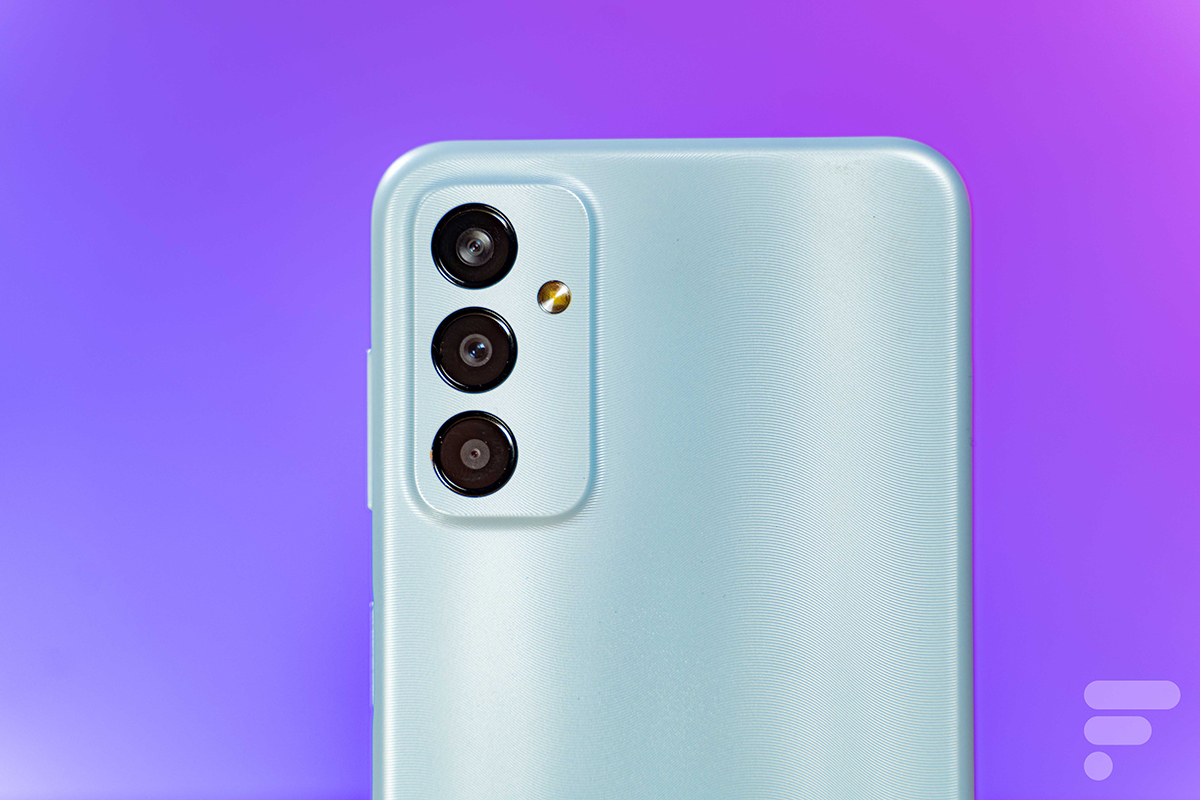
On a daily basis, if you do not abuse notifications or video games, it can accompany you for more than a day, or even two possibly. But in case of low battery level, do not rely on fast charging, simply absent here.
Samsung Galaxy M13 4GNetwork and communication
This smartphone supports all 4G frequency bands. Add Wi-Fi 5, Bluetooth 5.0 and NFC and you’re good to go. Regarding calls, nothing to report.
Finally, the integrated GPS works without difficulty and we did not notice any geolocation problems.
Samsung Galaxy M13 4GPrice and availability
The Samsung M13 is available at a price of 199 euros.
Where to buy The
Samsung Galaxy M13 4G at the best price?
